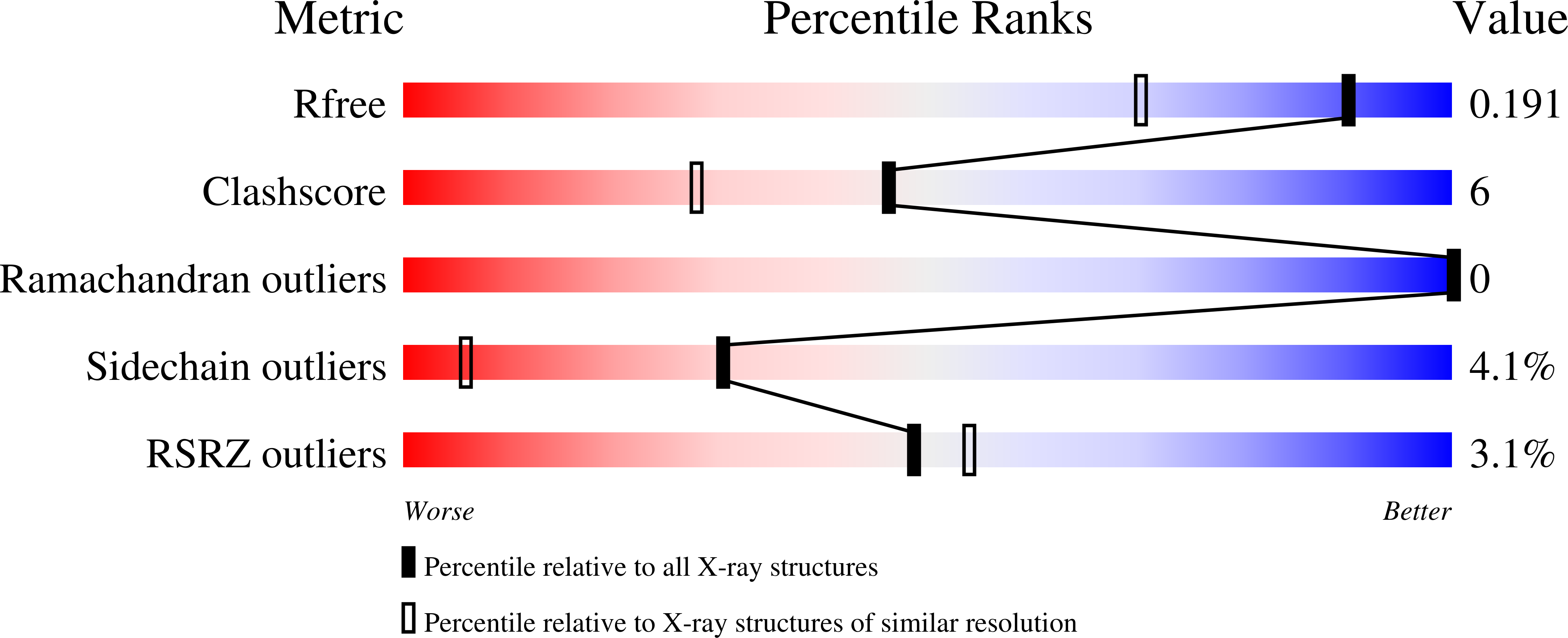Structure and Kinetics of a Monomeric Glucosamine 6-Phosphate Deaminase: Missing Link of the Nagb Superfamily
Vincent, F., Davies, G.J., Brannigan, J.A.(2005) J Biol Chem 280: 19649
- PubMed: 15755726
- DOI: https://doi.org/10.1074/jbc.M502131200
- Primary Citation of Related Structures:
2BKV, 2BKX - PubMed Abstract:
Glucosamine 6-phosphate is converted to fructose 6-phosphate and ammonia by the action of the enzyme glucosamine 6-phosphate deaminase, NagB. This reaction is the final step in the specific GlcNAc utilization pathway and thus decides the metabolic fate of GlcNAc. Sequence analyses suggest that the NagB "superfamily" consists of three main clusters: multimeric and allosterically regulated glucosamine-6-phosphate deaminases (exemplified by Escherichia coli NagB), phosphogluconolactonases, and monomeric hexosamine-6-phosphate deaminases. Here we present the three-dimensional structure and kinetics of the first member of this latter group, the glucosamine-6-phosphate deaminase, NagB, from Bacillus subtilis. The structures were determined in ligand-complexed forms at resolutions around 1.4 Angstroms. BsuNagB is monomeric in solution and as a consequence is active (k(cat) 28 s(-1), K(m(app)) 0.13 mM) without the need for allosteric activators. A decrease in activity at high substrate concentrations may reflect substrate inhibition (with K(i) of approximately 4 mM). The structure completes the NagB superfamily structural landscape and thus allows further interrogation of genomic data in terms of the regulation of NagB and the metabolic fate(s) of glucosamine 6-phosphate.
Organizational Affiliation:
Structural Biology Laboratory, Department of Chemistry, University of York, Heslington, UK.















